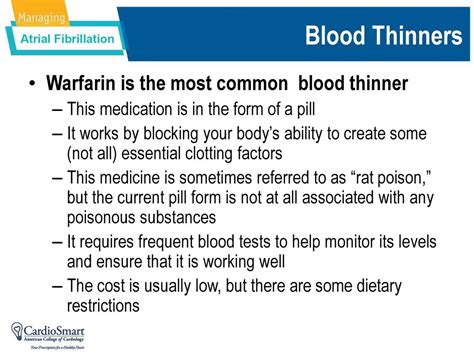The widespread use of omeprazole has revolutionized the treatment of acid-related disorders, providing unparalleled relief for millions of people worldwide. As a proton pump inhibitor (PPI), omeprazole works by effectively blocking the production of stomach acid, thereby alleviating symptoms associated with conditions such as gastroesophageal reflux disease (GERD), peptic ulcers, and Zollinger-Ellison syndrome. In this comprehensive guide, we will delve into the intricacies of omeprazole, exploring its mechanisms of action, benefits, potential side effects, and practical considerations for maximizing its therapeutic potential.
Understanding Omeprazole’s Mechanism of Action
Omeprazole exerts its therapeutic effects by irreversibly inhibiting the H+/K+ ATPase (proton pump) in the gastric parietal cells. This enzyme is responsible for the secretion of hydrochloric acid, which, when produced in excess, can lead to the erosion of the esophageal lining, stomach ulcers, and other complications. By blocking this enzyme, omeprazole significantly reduces gastric acid secretion, creating a less acidic environment that facilitates the healing of esophageal and gastric mucosa.
Benefits of Omeprazole
The advantages of omeprazole are multifaceted, offering rapid and sustained relief from acid-related symptoms, enhanced healing rates of esophageal and gastric lesions, and a reduced risk of complications such as bleeding and perforation. Furthermore, omeprazole has been shown to improve quality of life by alleviating symptoms such as heartburn, regurgitation, and dysphagia, thereby enabling individuals to engage more freely in daily activities without discomfort.
Potential Side Effects and Considerations
While omeprazole is generally well-tolerated, it is not devoid of potential side effects. Common adverse effects include headache, diarrhea, nausea, and vomiting. More severe, though rare, side effects can include clostridioides difficile-associated diarrhea, bone fractures, and magnesium deficiency. It is crucial for patients to be aware of these potential risks and to maintain open communication with their healthcare provider regarding any concerns or symptoms that arise during treatment.
Practical Considerations for Maximizing Benefits
To optimize the therapeutic benefits of omeprazole, several practical considerations should be kept in mind. First, it is essential to take omeprazole exactly as directed, typically on an empty stomach before breakfast, to ensure optimal absorption. Second, maintaining a consistent treatment schedule is vital for achieving and sustaining symptom relief. Third, lifestyle modifications, such as weight loss, elevated headrest during sleep, and avoidance of trigger foods, can complement omeprazole therapy, leading to improved outcomes.
Comparative Analysis of Treatment Options
In evaluating the effectiveness of omeprazole, it is constructive to compare it with other available treatment options. Histamine-2 (H2) blockers, for instance, also reduce stomach acid production but are generally considered less potent than PPIs like omeprazole. Antacids can provide quick relief of mild heartburn but may not offer the sustained acid suppression necessary for healing esophageal and gastric lesions. Thus, omeprazole, with its potent and long-lasting acid reduction capabilities, often represents a preferred choice for managing moderate to severe acid-related disorders.
Future Trends and Emerging Therapies
As research continues to evolve, emerging therapies and novel applications of omeprazole are being explored. The development of new PPIs with potentially improved safety profiles and the investigation of omeprazole in combination with other medications for enhanced efficacy are areas of active investigation. Furthermore, advancements in diagnostic techniques and personalized medicine are likely to refine the treatment approach, allowing for more tailored and effective management of acid-related diseases.
Decision Framework for Treatment Initiation
Initiating omeprazole therapy should be guided by a thoughtful decision-making process, taking into account the severity of symptoms, the presence of complicating factors, and the patient’s overall health status. A stepwise approach, starting with lifestyle modifications and progressing to pharmacotherapy as needed, can help determine the appropriateness of omeprazole for individual patients. Collaboration between patients and healthcare providers is crucial for making informed decisions and adjusting treatment plans as necessary to achieve optimal outcomes.
Conclusion
In conclusion, omeprazole represents a cornerstone in the management of acid-related disorders, offering significant benefits in terms of symptom relief and healing of gastric and esophageal lesions. By understanding its mechanism of action, being aware of potential side effects, and adhering to practical considerations for its use, patients can maximize the therapeutic potential of omeprazole. As medical science continues to advance, the role of omeprazole and other PPIs in the treatment landscape is likely to evolve, reflecting ongoing efforts to improve patient outcomes and quality of life.
What is the typical dosage of omeprazole for treating GERD?
+The typical dosage of omeprazole for treating gastroesophageal reflux disease (GERD) is 20 mg once daily, taken in the morning before breakfast. However, the dosage may vary depending on the severity of symptoms and the patient’s response to treatment, and should be determined under the guidance of a healthcare provider.
Can omeprazole be used long-term without significant risks?
+While omeprazole is generally considered safe for short-term use, long-term therapy may be associated with an increased risk of certain adverse effects, such as bone fractures and magnesium deficiency. Patients requiring prolonged treatment with omeprazole should be monitored closely by their healthcare provider to minimize these risks.
How does omeprazole compare to other medications used for acid reduction?
+Omeprazole, as a proton pump inhibitor (PPI), offers more potent and longer-lasting acid suppression compared to histamine-2 (H2) blockers and antacids. However, the choice of medication depends on the individual’s specific condition, severity of symptoms, and response to treatment, and should be made in consultation with a healthcare provider.


